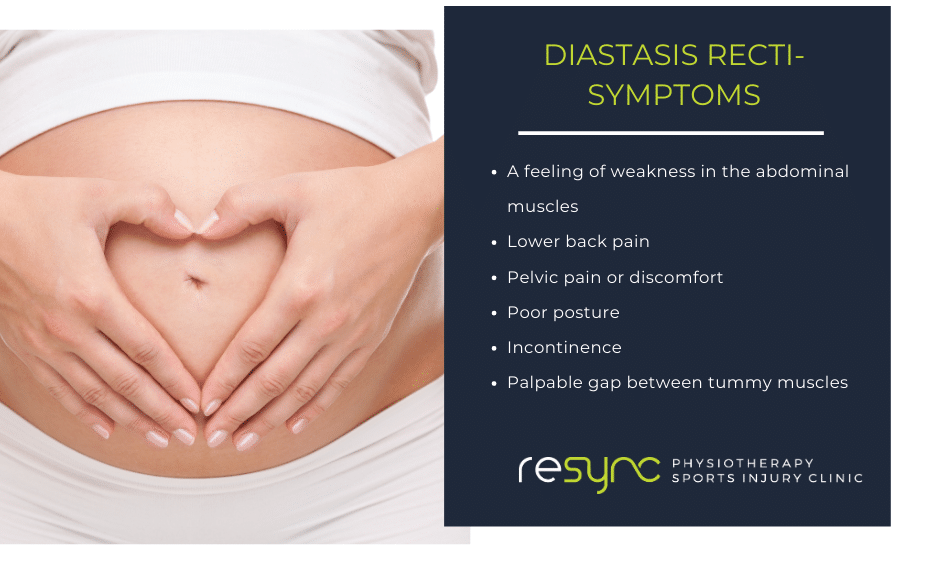Diastasis Recti: Symptoms, Treatment, Prevention, and More
This is a common condition that occurs when the abdominal muscles separate during pregnancy or postpartum. It affects up to two-thirds of pregnant women and can cause discomfort, weakness, and even affect self-confidence. In this article, we’ll discuss the symptoms, treatment, prevention, and more.
Diastasis Recti Symptoms
The most common symptom is a noticeable bulge or protrusion in the middle of the abdomen. Other symptoms include:
- A feeling of weakness in the abdominal muscles
- Lower back pain
- Pelvic pain or discomfort
- Poor posture
- Incontinence
It is important to note that not all women with experience these symptoms. In fact, some women may have a separation of the abdominal muscles without any noticeable symptoms.

Diastasis Recti Treatment
Treatment for depends on the severity of the condition. In mild cases, physical therapy or exercises that target the abdominal muscles may help to improve muscle tone and reduce the separation. In more severe cases, surgery may be necessary to repair the abdominal muscles.
Physical therapy: A physical therapist can help to develop a personalized exercise program that targets the abdominal muscles. Exercises may include pelvic tilts, bridges, and abdominal compressions.
Diastasis Recti Exercises: There are also exercises that can be done at home to help improve muscle tone and reduce the separation of the abdominal muscles. Examples of these exercises include:
- Pelvic tilts: Lie on your back with your knees bent and feet flat on the floor. Flatten your back against the floor by tightening your abdominal muscles and tilting your pelvis upward.
- Bridges: Lie on your back with your knees bent and feet flat on the floor. Lift your hips off the floor by pushing through your heels and tightening your glutes and abdominal muscles.
- Abdominal compressions: Lie on your back with your knees bent and feet flat on the floor. Place your hands on your abdomen and exhale while pressing your hands into your belly.
Surgery: In severe cases of diastasis recti, surgery may be necessary to repair the abdominal muscles. The surgery involves suturing the abdominal muscles back together and may be combined with a tummy tuck.
Check out this video of breathing with Pelvic control
Prevention
While diastasis recti cannot always be prevented, there are steps that can be taken to reduce the risk of developing the condition. These include:
- Maintaining a healthy weight before and during pregnancy
- Avoiding exercises that place excessive strain on the abdominal muscles, such as sit-ups or crunches
- Using proper form when lifting heavy objects
- Strengthening the pelvic floor muscles with Kegel exercises
It is also important to note that women who have had multiple pregnancies or large babies may be at an increased risk for developing diastasis recti.
Conclusion
Diastasis recti is a common condition that can cause discomfort and affect self-confidence. While it cannot always be prevented, there are steps that can be taken to reduce the risk of developing the condition. If you are experiencing symptoms of diastasis recti, it is important to speak with your healthcare provider. Treatment options may include physical therapy, exercises, or surgery, depending on the severity of the condition. With the right treatment and prevention strategies, women can improve muscle tone and reduce the separation of the abdominal muscles, leading to a healthier and more confident postpartum body.



